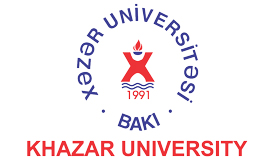International Conference on Materials Science and Research
November 16-18, 2017 Dubai, UAE
Spin-Orbital Polarons in Electron Doped Cooper Oxides
1Department of Physics, Loughborough University, UK
2Beijing National Laboratory for Condensed Matter Physics, Institute of Physics, Chinese Academy of Sciences, China
3Collaborative Innovation Center of Quantum Matter, China
Here we show that in electron doped copper oxides oxygen orbitals in CuO2 planes can be polarised with electron doping to form spin-orbital polarons. We introduce a concept of such a polaron. In these spin-orbital polarons, electrons are self trapped in one dimensional channels created by a polarisation of the oxygen orbitals forming an elongated filament. All these filaments have two possible orientation, along the main diagonals of the elementary CuO2 square. When the density of doped electrons increases many filaments are formed. They may be condense in a big filament or crossing each other perpendicularly, i.e. under right angle and therewith creating a conducting quasi-one-dimensional web. The web and the AF state are coexisting with each other at small doping. When doping increases the web of filaments is modifying the AF correlations and leads to a series of quantum phase transitions.
We show that with electron doping here may arise an issue related to a polarisation of the oxygen orbitals in CuO2 plane, which can lead to a formation of new spin-orbital polarons. These polarons combine the features of the conventional electron-phonon polarons and of magnetic polarons8. They can form nanofilaments as spin bags. The multi-polarons may naturally arise in oxide materials due to the screening of the electron-elecron interaction by oxygen polarisation. Such multipolaron network provide the anomalous in-plane and out-plane magnetoresistance of electron-doped cuprate La2−xCexCuO4±δ[1]. We made a detail comparison of the developed theory with experiments and show that the spin-orbital polarons may describe these experiments very well.
Biography:
Fedor V Kusmart is Vice Head of Physics Department, Loughborough University, United Kingdom. For ten years Kusmartsev has been leading and managing the large multi-stakeholder research consortium ∇ the European Network-Programme “Arrays of Quantum Dots and Josephson Junctions”(AQDJJ). This very large consortium included 75 research teams with very different cross-disciplinary background, from Physics, Chemistry, Engineering, Mathematics and Computing Departments of 75 EU universities distributed over 12 EU countries (Austria, Belgium, Czech Republic, Denmark, Finland, Germany, Italy, Slovak Republic, Spain, Sweden, Switzerland and UK) and have very different cultural, academic and industrial backgrounds. The European Science Foundation assessment reports unanimously stated that the strong success of the AQDJJ consortium work was “due to the leadership of the AQDJJ chairman, Prof Fedor v Kusmartsev”.He is a Member of International Editorial Advisory Boards: journal N1: Advances in Condensed Matter Physics (since 2007); journal N2: Econophysics, New Economy and Complexity (since 2010). N3: Scientific Reports (NATURE, since 2013); was a guest editor of several high profile journals: Journal of PhysicsA(2003), Superconducting Science and Technology(2009), J. of Modern Physics B(2008).



